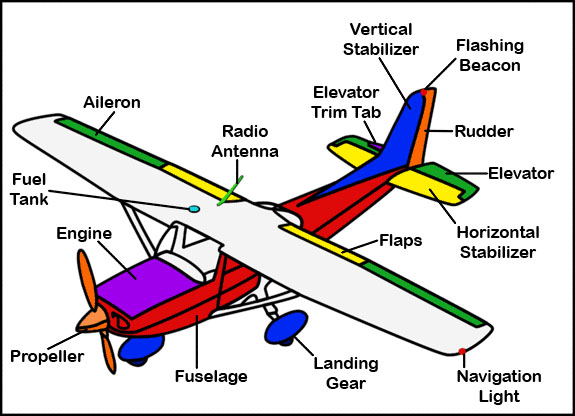 Airplanes and helicopters are supposed to be light weight, right? Engineers spend countless hours designing light-weight composites and metal alloys to be high in strength but ultra light in weight for aircraft. Metals continue to be reviewed and optimized to increase strength while reducing aircraft weights. So why would materials such as lead or tungsten be used in aircraft?
Airplanes and helicopters are supposed to be light weight, right? Engineers spend countless hours designing light-weight composites and metal alloys to be high in strength but ultra light in weight for aircraft. Metals continue to be reviewed and optimized to increase strength while reducing aircraft weights. So why would materials such as lead or tungsten be used in aircraft?
In smaller aircraft, lead or tungsten weights are used in the ailerons and the elevators, which are what steer the aircraft and control its elevation. In larger jets, ailerons and elevators are controlled by hydraulic systems which control many elements of the aircraft; including the landing gear. In small aircraft, hydraulic systems are not practical because of the size, weight and cost. As a result in smaller aircraft, the ailerons and elevators use weights in these specific areas to act as counterweights to bring the aileron or elevator back to a zero position.
In helicopters, lead and tungsten weights are placed in the main rotor and tail blades. It takes a lot of power to get the blades up to full speed and it keeps a lot of power and force to keep the blades spinning. To help in this process, high density weights are placed at the tip of the helicopter blades in the leading edge to help create inertia once they begin spinning. The more inertia the better to maintain the rotation and reduce the power needs from the engine.
In some applications, high density weights are also used for vibration dampeners. These are typically applied after full design to control vibration and – in some cases – allow for adjustment based on what the specific aircraft requires. Even with the best development and planning, sometimes vibration dampening is still required.
It is strange to consider that some aerospace applications are designed from some of the lightest and strongest materials on earth. There are components within some aircraft that are made from some of the most dense metals on earth. This is just another example of unique applications for high density metals such as lead and tungsten.
